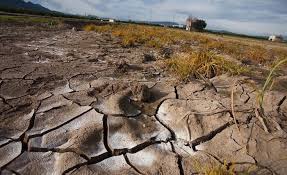Introduction: The crisis beneath our feet
In a farmland in Benue State of Nigeria, Chinedu Maduka inspects his crops. his once-fertile land is losing yield year after year, despite increasing the use of fertilizers. Nearby, Amina Bello, a regenerative farmer, has a different experience. Her soil remains rich, her crops thrive, and she spends 40% less on inputs!
The difference? Regenerative agriculture

As global concerns over soil degradation, climate change, and food insecurity grow, farmers worldwide are shifting towards a nature-based, soil-first approach to ensure long-term productivity. Can regenerative farming truly replace conventional methods and become the future of sustainable agriculture?
The problem: Our soil is dying
The United Nations has warned that if current soil degradation continues, the world may have only 60 harvests left for intensive farming practices, as synthetic fertilizers, and deforestation have depleted soil health, leading to:
Regenerative agriculture offers a practical solution to heal the soil while feeding the world.
What is regenerative agriculture?
Regenerative farming goes beyond sustainability, it restores and improves the land by working with nature rather than against it. The core principles include:
These techniques result in healthier soil, increased yields, and lower costs
The science: Why regenerative farming works
- Soil health and carbon sequestration
Healthy soil captures carbon dioxide from the atmosphere, reducing global warming. Studies show that regenerative farms store up to three times more carbon than conventional farms.
- Increased crop resilience
Farmers adopting regenerative methods report up to 20% higher crop yields, even in drought conditions. in Kenya, maize farmers saw a 30% increase in production while using 50% fewer chemical inputs.
- 3. Restoring biodiversity
Chemical farming destroys essential microbes and insects. regenerative agriculture reintroduces natural ecosystems, boosting pollinators like bees and improving crop quality.
- Financial benefits
A 2023 study found that regenerative farmers spend 40% less on fertilizers and pesticides, while earning higher profits from premium-quality produce.
Regenerative agriculture in action: Global success stories United States: Large-scale adoption
Big brands like General Mills and Nestlé are investing in regenerative farming, committing to sourcing from farms that improves soil health.
India: Small farmers leading the way
In Andhra Pradesh, over 800,000 farmers have transitioned to zero budget natural farming, reducing costs while increasing profits.
Nigeria: Local innovations
In Kano State, regenerative techniques have helped restore fertility in desert-prone areas, enabling farmers to grow sorghum and millet more efficiently.
The Netherlands: A global model
Despite having limited farmland, The Netherlands has become the world’s second-largest food exporter, thanks to regenerative agricultural methods.
Challenges and roadblocks
Despite its benefits, regenerative farming still faces barriers to widespread adoption:
To accelerate the transition, experts suggest more government incentives, farmer training programmes, and financial support for regenerative practices.
The future: is regenerative farming the answer?
As climate change intensifies and soil health continues to decline, the world must rethink its approach to food production. by 2030, we may see:
- Regenerative policies becoming global standards
- Carbon credits for farmers adopting soil-restoring practices
- Greater corporate investment in regenerative food sourcing
- Artifical Intelligence (AI)-driven precision agriculture merging with regenerative techniques
Regenerative farming is not just a trend, it is a necessity for feeding future generations sustainably.
Conclusion: A call to action for farmers, policymakers, and consumers
While Maduka struggles with declining soil fertility, Amina Bello proves that regenerative farming is not just an alternative, it is the future. To secure global food systems, we must ask ourselves: will we continue exploiting the soil, or will we work to restore it? The choice is ours.
Opinion

